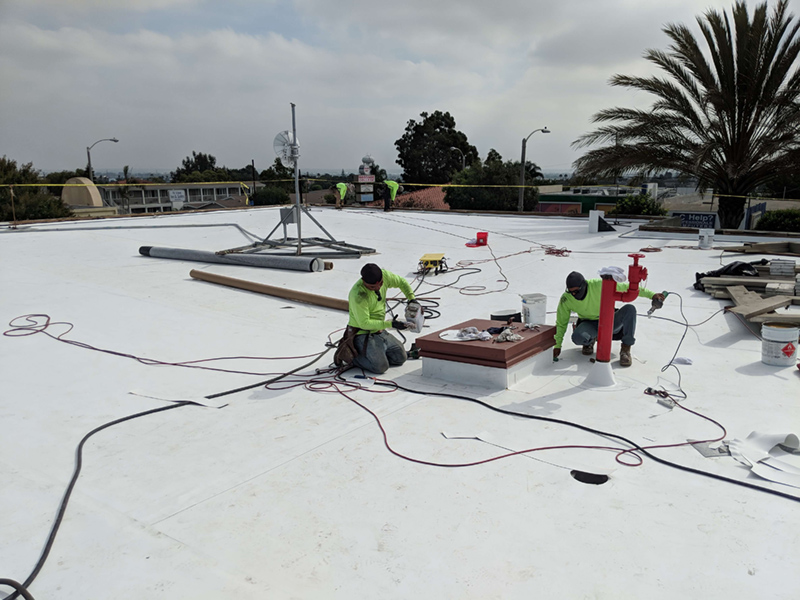Tips for Applying Elastomeric Roof Coatings
Many modern-day commercial roof systems provide excellent coverage and protection against the elements, but even the best materials properly applied can have their weaknesses. Applying elastomeric roof coatings can greatly enhance waterproofing and reflectivity for your roof. Still, as with any other material, it must be used correctly for maximum benefit. Let’s look at some of the benefits of elastomeric coatings and offer some best practices for applying them.

What Are Elastomeric Coatings?
The word “elastomeric” is basically a fancy word for “elastic” or “stretchy.”
An elastomeric coating is a liquid-applied coating that is several times thicker than paint. When applied to roofing systems, it forms a highly resilient waterproof top layer that can easily expand and contract with the roof itself as it responds to temperature changes and weather conditions, all without cracking or tearing.
Elastomeric coatings are typically used on roofs, but they can also provide protective coatings for walls and other applications. Many elastomer types are available on the market, but the most common types for roofs are made from acrylic, urethane, or silicone.
Why Use an Elastomeric Coating?
Developers, architects, and professional roofers choose to use elastomeric coatings because they offer several key advantages. These include:
- Added protection. Elastomeric coatings add waterproofing and corrosion protection to your roof, as well as increased protection from wind damage, tears, and punctures.
- Extended roof life. An elastomeric coating can extend the life expectancy of your roof. (Many roofers apply elastomeric coatings to aging roofs that are still intact to extend their viability.)
- Increased energy efficiency. A white elastomeric topcoat can provide a “cool roof” effect, reflecting the sun’s rays, so buildings stay cooler and save on energy bills.
Best Time and Conditions for Application
The best conditions for applying elastomeric roof coatings are when it’s dry and mild outside — i.e., not too cold or hot. Residual moisture and humidity can affect the coating’s adhesion and integrity, so it’s best if there has been no precipitation several days before applying, with no rain in the forecast for 24-48 hours. Cold and hot temperatures can affect the coating’s viability, but sunny, mild conditions will help it dry faster. If you can choose the time of year, shoot for applying the coating on a dry autumn or spring day.
Tools Required for Elastomeric Coating
You’ll need to bring the following items to the job site to apply elastomeric coating:
- Brooms
- Power washer (if the roof has not been previously washed)
- Method of application (e.g., rollers, power rollers, or coating spreader)
How to Prepare the Roof Surface
The roof must be clean and free of debris before applying the coating. Pick up any larger pieces of trash, branches, or other debris, then do an extensive sweep of the roof. If the roof needs it, do a power wash, but ensure the surface is completely dry (1-4 hours, depending on weather conditions) before applying the coating.
Drying/Curing Times
The amount of time it takes for elastomeric coatings to cure depends largely on the weather conditions. In warm, dry conditions, the roof may be dry in a few hours; in humid conditions, it can take longer. Generally speaking, most elastomeric coatings will be dry to the touch and safe to walk on within eight to24 hours after application.
Best Elastomeric Coating for Your Project?
There are many elastomeric products on the market, and not all will be best suited to your roofing needs. When you work with a manufacturer representative like RoofSource, our team of experts can evaluate your project and needs to help you choose from a wide range of excellent coating products from trusted brands.
